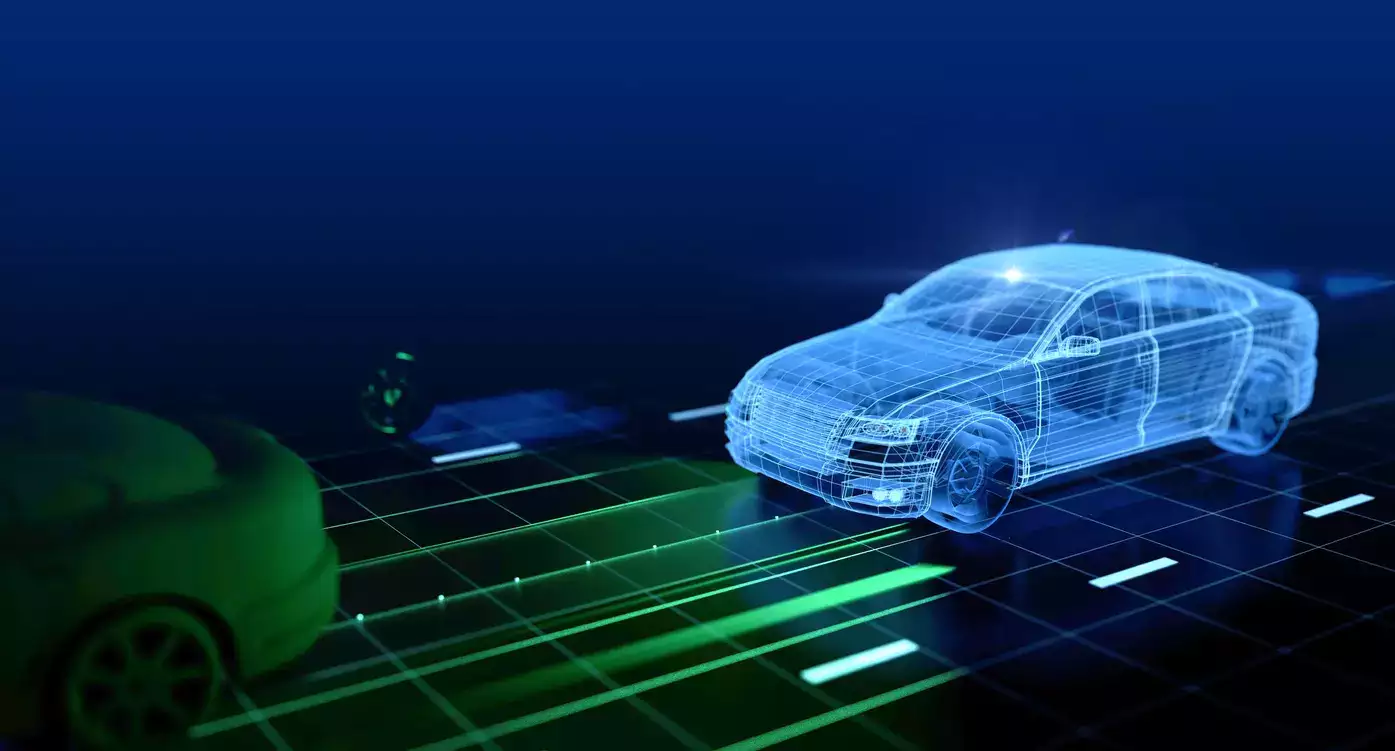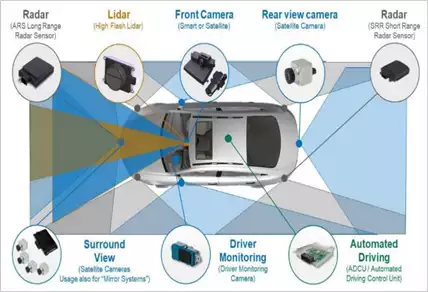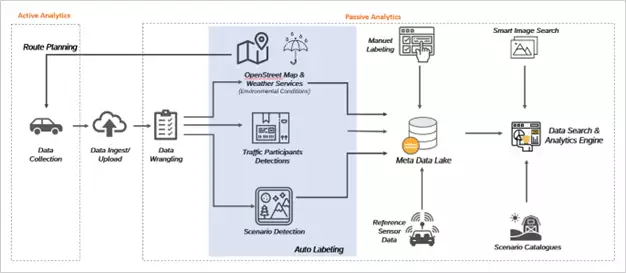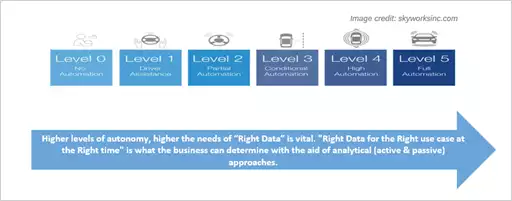
Application of data analytics
In autonomous driving, data analytics can be applied at both active and passive levels. Active analytics is when different techniques are used to collect the right data for the right use-cases, and it is more direct and saves cost. Passive analytics uses techniques to find the right data among petabytes of collected data and this incurs more costs and time.
In order to reach level 5 autonomy in ADAS, more software development, simulation and validation, along with AI and high computing are needed. The right data will be the key differentiator here. Developing, validating, and ensuring high performance of the autonomous driving software using AI needs millions and billions of km of real world scenarios that is neither economically nor practically feasible in the automotive ecosystem of today. Data analytics has a huge potential to collect, process and store right data for right use case at right time in an optimal manner. This will save time, resources and money for OEMs and automated driving solution providers.
Data in ADAS

Sensors that are fitted on the vehicle such as Cameras, Radars and LiDAR collects the ADAS test data and captures and store real-time road scenarios while driving. The data that is generated is massive. One km of driving using a standard setup of sensors can generate gigabytes to terabytes of data. That’s not all, millions of km of data (petabytes of raw data) need to be gathered to validate the functionality of the autonomous diving software. This poses some challenges that need to be addressed as solutions must be efficient in a short time. The overall flow of ADAS test data requirements include data collection, data upload, data wrangling, data enrichment & search and data usage.
Some of the challenges are:
Active and passive analytics: End to end solution.
As the degree of autonomy grows, the need for data also rises. There is a lot of data scarcity in newly collected data. Data shortfalls often get revealed while developing the autonomous driving software development and validation. This means loss of time and money. Active analytics help obtain the right data at the right time for the right purpose.
Passive analytics, on the other hand, is applicable where petabytes/millions of km of AD Test data has already been collected, stored, and processed. Each gigabyte of test data is vital and costly to store and process, whether a data centre or in cloud. As a result, it is critical to process each gigabyte of data and categorize it based on its value. If the data has value, it has to be investigated further to assess its precision to precisely locate the road environment and its participants (may be static or dynamic) by fusing data from various sensors. Passive analytics can also help to increase data re-use, and in some circumstances, the cost of gathering new data can be reduced but with certain limitations. The precise data discovered has to be made available and easily accessible for use. This increases the lead time for AD software development and validation.


(Disclaimer: Surendhar Selvaraj and Jaydeep Banerjee, Autonomous Mobility, Continental Automotive India. Views are personal.)
Disclaimer: The copyright of this article belongs to the original author. Reposting this article is solely for the purpose of information dissemination and does not constitute any investment advice. If there is any infringement, please contact us immediately. We will make corrections or deletions as necessary. Thank you.





